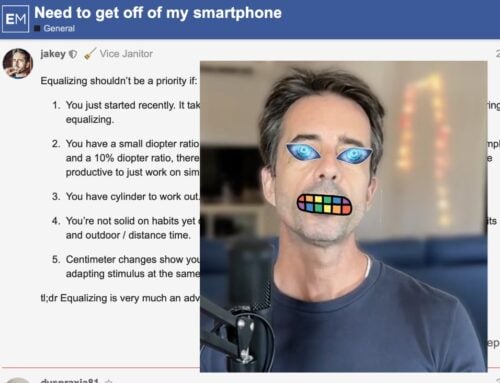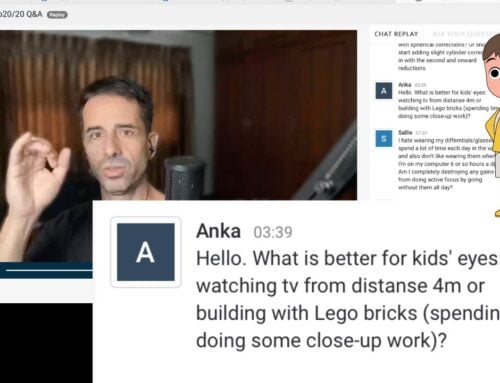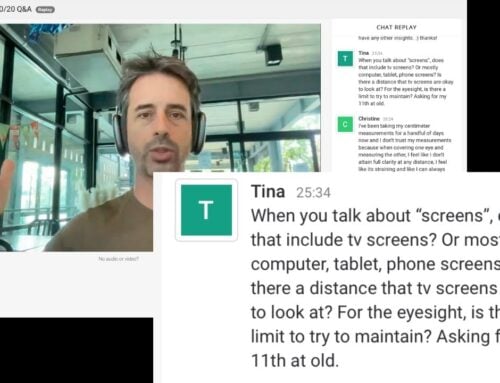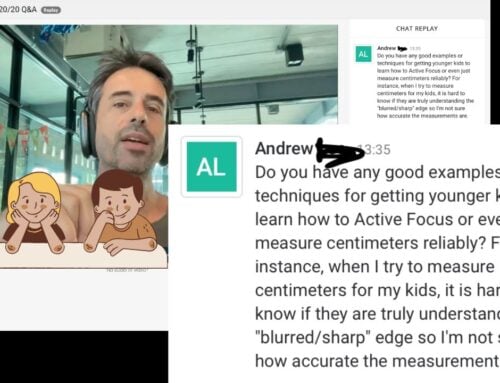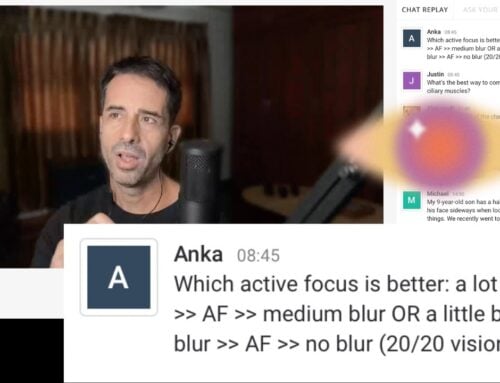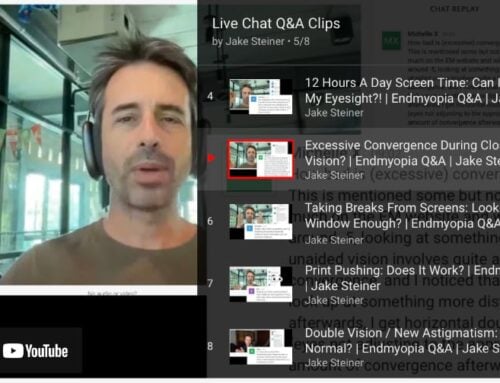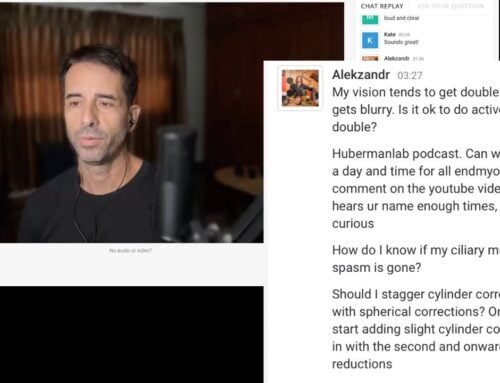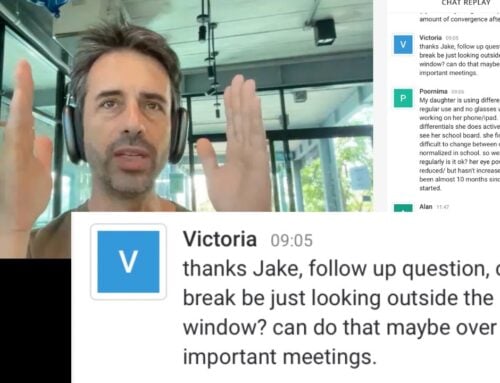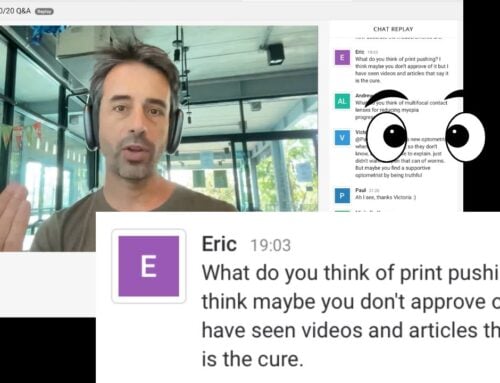This, absolutely a pro topic. If you’re a casual reader, skip this one!
As you start practicing active focus with reduced diopters, you realize that your environment doesn’t fade straight to blur, from clear vision. Instead there is an intermittent layer of double vision, almost as though your eyes are trying to hang on to the clear image, and slowly losing the battle over to blur.
We talk about the causes of this double vision experience quite a bit here in the blog, over in BackTo20/20, and in the forum. It’s a key experience, and an important part of challenging your visual cortex in your vision improvement process.
What you notice after a while is that you can actually clear written text at increasing distances, relative to your lens correction, as you get better at active focus. The range at which you experience double vision images continues to increase, and this experience becomes in part almost independent of the blur horizon. As you dig in at this stage, you might wonder just how much of this double vision is appropriate, and how to control the extent to which you experience it.
I just provided a lengthy answer to this very question over in the forum. Since it applies to everyone working on their eyesight, here it is for blog posterity:
A few pointers: A removed astigmatism correction may make the double vision images difficult to clear (for a while). Adding some part of it back in can help reduce that effect and make it easier to resolve the double vision.
If that’s not the case, then generally adding a little more correction will reduce the double vision effect. Especially once you get good with active focus, you notice that you get quite a bit of latitude in how much distance you can clear with it. To dial in how much double vision images you are comfortable with, increasing or decreasing your normalized prescription is very effective.
Another note here, sometimes the double vision aspect is a subjective matter of comfort level. If it doesn’t actually bother you, or it’s just new, or you worry about having to resolve it perfectly, it might also be something to de-emphasize a bit. For example I was always one of the slow improving cases and I needed quite a bit of stimulus to continue progressing (some need much less). So I was always using lenses with low enough relative diopter correction to give me lots of double vision challenge. Whenever I went to a less challenging correction I’d stop making progress, so I learned to make that work for me.
It’s all about fine tuning your lenses to where you’re comfortable with the challenge, and then keeping a bit of a log to make sure you get around 0.75 diopter a year of improvement at least (0.25 diopter reductions ever 3-4 months on average).
As always, the disclaimer: Don’t go monkey-ing around with lenses if you aren’t absolutely clear on how it all works. Find a friendly optometrist to help you! And of course, if you can get your hands on a BackTo20/20 invite, also a great way to go.
Cheers,
-Jake







